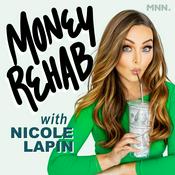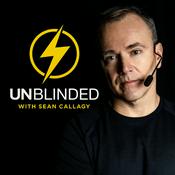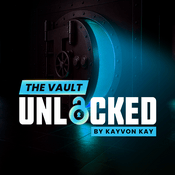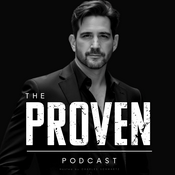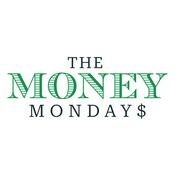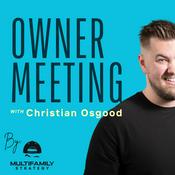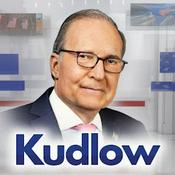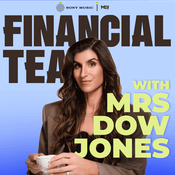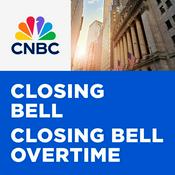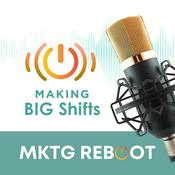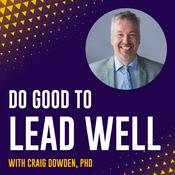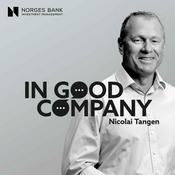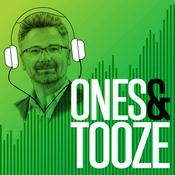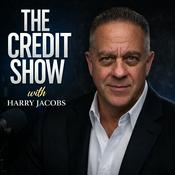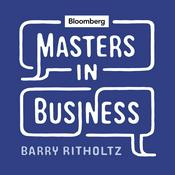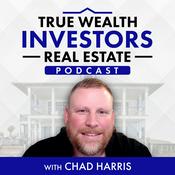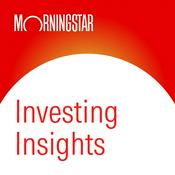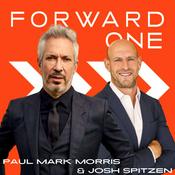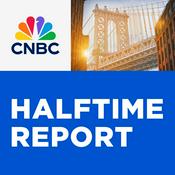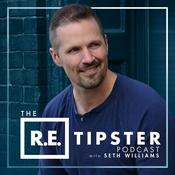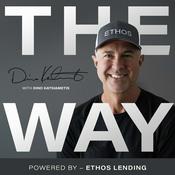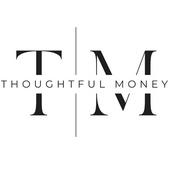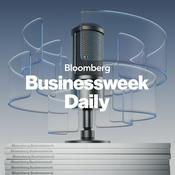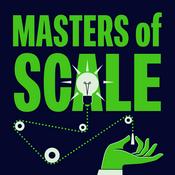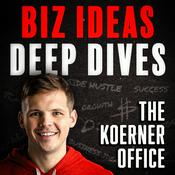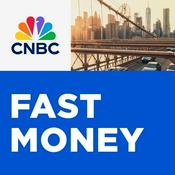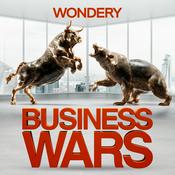275 episodes
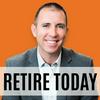
Growing Your Cash as an Asset in Retirement with Gary Zimmerman
1/06/2026 | 34 mins.
Gary Zimmerman of Max® explains how to utilize your cash asset in retirement. Cash is one of the most overlooked assets in retirement. Here’s how retirees can earn thousands more in interest while keeping their money safe and FDIC-insured. Many retirees spend years carefully managing their investments — stocks, bonds, and retirement accounts get plenty of attention. But there’s one asset class that often gets ignored: cash. In this episode of Retire Today, I’m joined by Gary Zimmerman, founder and CEO of Max® to talk about why so many Americans are earning next to nothing on their bank money — and how that quiet mistake can cost retirees tens of thousands of dollars over time. As Gary explains early in the conversation, “People think that the bigger the bank, the safer it is. And that’s patently not true.” In fact, many of the banks that failed during past financial crises were among the largest institutions. Why Cash Matters More in Retirement Cash plays a unique role in retirement. It provides liquidity, stability, and peace of mind — especially when markets are volatile. But that doesn’t mean cash has to sit idle. Gary shared that after years as an advisor, he started getting a flood of calls from clients during the COVID period. Their CDs were maturing, and rates were dropping instead of rising. “They were missing out on thousands of dollars in interest,” he said. At the same time, trillions of dollars across the U.S. were sitting in bank accounts earning close to zero — while other savers were earning closer to 4% in the same type of FDIC-insured accounts. That gap is not about risk. It’s about awareness and access. FDIC Insurance: Safety Without Sacrificing Yield One of the most important parts of the conversation focused on FDIC insurance. Many people believe that as long as their money is at a big-name bank, it’s automatically safe. But FDIC insurance has limits — typically $250,000 per depositor, per bank, per ownership category. As I shared in the episode, I regularly see “everyday millionaires” with far more than $250,000 sitting in bank-type accounts — without full insurance coverage. Gary explained how spreading cash across multiple institutions increases FDIC protection and improves interest rates at the same time. “The more diversified you are, the more guarantees you get from the FDIC,” he said. Why Banks Pay So Little (And Why They Can) A question many retirees ask is simple:If higher rates exist, why don’t banks automatically pay them? Gary’s answer was refreshingly blunt. Banks don’t raise rates unless they need your money. When a bank pays 0.1% or 0.2%, it’s often a signal: “They’re telling you they don’t want your money.” Online banks, smaller institutions, and rate marketplaces compete aggressively for deposits — and that competition benefits savers who are willing to look beyond their local branch. As Gary put it, “There’s an actual market for your money. Just like selling a house, you have to put your money on the market to get the best price.” DIY vs. Using a Service Could retirees do all of this on their own? Yes.But should they? Gary compared the process to constantly switching phone plans or insurance providers. It works — but it requires attention, time, and discipline. Rates change, banks create teaser accounts, and some institutions quietly lower yields after a few months. Max® was designed to automate that process. As Gary described it, the goal is to “spend five or ten minutes thinking about cash, then never think about it again.” For many clients, that convenience translates into meaningful results. Gary shared that a retiree with $250,000 in cash could earn roughly $10,000 more per year, or $100,000 over a decade, simply by managing cash more effectively. The Behavioral Finance Problem Nobody Talks About One of my favorite parts of the conversation focused on behavioral finance. People say they like their bank because it feels familiar. But when asked how they actually interact with it, the answer is usually: “I use the app.” At that point, loyalty becomes expensive. As Gary summed it up, “The bank owes you nothing. You owe the bank nothing.” Your savings should work as hard as you did to earn it. The Bottom Line Cash isn’t boring — it’s powerful when used correctly.For retirees, optimizing cash can mean more flexibility, less risk, and thousands of dollars in additional income over time — without chasing returns or increasing exposure. Don’t forget to leave a rating for the “Retire Today” podcast if you’ve been enjoying these episodes! Subscribe to Retire Today to get new episodes every Wednesday. Apple Podcasts: https://podcasts.apple.com/us/podcast/retire-today/id1488769337 Spotify Podcasts: https://bit.ly/RetireTodaySpotify About the Author: Jeremy Keil, CFP®, CFA® is a financial advisor in Milwaukee, WI, author of the bestseller Retire Today: Create Your Retirement Master Plan in 5 Simple Steps and host of both the Retire Today Podcast and Mr. Retirement YouTube channel Additional Links: Buy Jeremy’s book – Retire Today: Create Your Retirement Master Plan in 5 Simple Steps Gary Zimmerman on LinkedIn Max®: Your Best Interest Create Your Retirement Master Plan in 5 Simple Steps Connect With Jeremy Keil: Keil Financial Partners LinkedIn: Jeremy Keil Facebook: Jeremy Keil LinkedIn: Keil Financial Partners YouTube: Mr. Retirement Book an Intro Call with Jeremy’s Team Media Disclosures: Disclosures This media is provided for informational and educational purposes only and does not consider the investment objectives, financial situation, or particular needs of any consumer. Nothing in this program should be construed as investment, legal, or tax advice, nor as a recommendation to buy, sell, or hold any security or to adopt any investment strategy. The views and opinions expressed are those of the host and any guest, current as of the date of recording, and may change without notice as market, political or economic conditions evolve. All investments involve risk, including the possible loss of principal. Past performance is no guarantee of future results. Legal & Tax Disclosure Consumers should consult their own qualified attorney, CPA, or other professional advisor regarding their specific legal and tax situations. Advisor Disclosures Alongside, LLC, doing business as Keil Financial Partners, is an SEC-registered investment adviser. Registration does not imply a certain level of skill or expertise. Advisory services are delivered through the Alongside, LLC platform. Keil Financial Partners is independent, not owned or operated by Alongside, LLC. Additional information about Alongside, LLC – including its services, fees and any material conflicts of interest – can be found at https://adviserinfo.sec.gov/firm/summary/333587 or by requesting Form ADV Part 2A. The content of this media should not be reproduced or redistributed without the firm’s written consent. Any trademarks or service marks mentioned belong to their respective owners and are used for identification purposes only. Additional Important Disclosures

How to Retire in 2026: 5 Steps to Reach the Finish Line
12/31/2025 | 17 mins.
Jeremy Keil explains the 5 steps you can take if you are planning to retire in 2026 or 2027. If you’ve been planning to retire in 2026 or 2027, it might feel like you still have plenty of time. But in reality, retirement has a way of showing up earlier than expected — and when it does, the people who feel the most confident are the ones who prepared well in advance. In this episode of Retire Today, I walk through five things you should do before you quit working if retirement is anywhere on your near-term horizon. These steps aren’t about picking a perfect retirement date. They’re about being ready — even if your plans change. Why You Should Prepare Earlier Than You Think Two important statistics shape this entire conversation. First, the stock market is historically up about 70% of the time in any given year. That also means it’s down about 30% of the time. If you’re retiring soon, there’s a real chance that your account balances could be lower at retirement than they are today. Second, most Americans retire about three years earlier than they expect. Health changes, job shifts, burnout, or family needs often move retirement forward — whether planned or not. That’s why I encourage people to prepare for retirement three years ahead of time, even if they believe they’ll work longer. Planning early gives you flexibility. Waiting too long removes it. 1. Create a Written Retirement Plan The first and most important step is to put your plan in writing. Many people have a retirement date in mind, but when asked how everything will actually work, they don’t have clear answers. A written plan forces clarity. This is where the 5-Step Retirement Plan comes in: What you’ll SPEND What you’ll MAKE What you’ll KEEP after taxes How you’ll INVEST What you’ll LEAVE behind Writing this down helps turn vague ideas into an actionable roadmap — and exposes gaps before they become problems. 2. Build a Lifetime Income Plan Retirement isn’t about having a big account balance — it’s about knowing where your income will come from every month. Before you retire, you should know: How much income you need Where that income will come from Which accounts you’ll use first How taxes affect each withdrawal At a minimum, you should map out the first 12 months of retirement income in detail. That includes Social Security, pensions, savings, brokerage accounts, and retirement accounts — and the tax rules that apply to each one. Surprises here are costly. Planning removes them. 3. Make Your Retirement Plan Tax-Smart Many people assume their taxes will automatically go down in retirement. Sometimes that’s true — but not always. Pensions, Social Security, required minimum distributions, and investment income can push retirees into higher tax brackets than expected. The key is understanding when you’ll have flexibility and using it intentionally. Retirement often creates opportunities to: Shift income between tax years Take advantage of lower tax brackets Manage Roth conversions strategically Plan around healthcare subsidies Taxes don’t disappear in retirement — they change. Planning ahead helps you adapt. 4. Plan Your Retirement Healthcare Healthcare is one of the biggest unknowns in retirement. Before you retire, you should know: What coverage you’ll use immediately What it will cost How that coverage changes over time When Medicare becomes part of the picture Options may include employer coverage through a spouse, COBRA, retiree health plans, ACA plans, or Medicare — and each comes with different costs and rules. Healthcare planning isn’t just about insurance. It’s about understanding how medical costs interact with your tax plan and your income strategy. 5. Create a Retirement Investment Plan Retirement changes your investment timeline. You’re no longer investing only for growth — you’re investing for income and stability, too. That means separating your money into: Short-term funds for near-term spending Long-term investments for growth over decades Money you’ll need soon shouldn’t be exposed to short-term market swings. At the same time, money you won’t need for many years still needs growth to keep up with inflation. The right investment plan balances both — and helps prevent panic decisions when markets get volatile. The Bottom Line If you’re planning to retire in 2026 or 2027, now is the time to prepare. Not because something bad will happen — but because preparation gives you options. Retirement doesn’t have to be so stressful. With a written plan, a clear income strategy, smart tax planning, healthcare clarity, and a thoughtful investment approach, you can step into retirement with confidence — whenever it arrives. Don’t forget to leave a rating for the “Retire Today” podcast if you’ve been enjoying these episodes! Subscribe to Retire Today to get new episodes every Wednesday. Apple Podcasts: https://podcasts.apple.com/us/podcast/retire-today/id1488769337 Spotify Podcasts: https://bit.ly/RetireTodaySpotify About the Author: Jeremy Keil, CFP®, CFA® is a financial advisor in Milwaukee, WI, author of the bestseller Retire Today: Create Your Retirement Master Plan in 5 Simple Steps and host of both the Retire Today Podcast and Mr. Retirement YouTube channel Additional Links: Buy Jeremy’s book – Retire Today: Create Your Retirement Master Plan in 5 Simple Steps Create your retirement master plan in 5 simple steps: www.5StepRetirementPlan.com Connect With Jeremy Keil: Keil Financial Partners LinkedIn: Jeremy Keil Facebook: Jeremy Keil LinkedIn: Keil Financial Partners YouTube: Mr. Retirement Book an Intro Call with Jeremy’s Team Media Disclosures: Disclosures This media is provided for informational and educational purposes only and does not consider the investment objectives, financial situation, or particular needs of any consumer. Nothing in this program should be construed as investment, legal, or tax advice, nor as a recommendation to buy, sell, or hold any security or to adopt any investment strategy. The views and opinions expressed are those of the host and any guest, current as of the date of recording, and may change without notice as market, political or economic conditions evolve. All investments involve risk, including the possible loss of principal. Past performance is no guarantee of future results. Legal & Tax Disclosure Consumers should consult their own qualified attorney, CPA, or other professional advisor regarding their specific legal and tax situations. Advisor Disclosures Alongside, LLC, doing business as Keil Financial Partners, is an SEC-registered investment adviser. Registration does not imply a certain level of skill or expertise. Advisory services are delivered through the Alongside, LLC platform. Keil Financial Partners is independent, not owned or operated by Alongside, LLC. Additional information about Alongside, LLC – including its services, fees and any material conflicts of interest – can be found at https://adviserinfo.sec.gov/firm/summary/333587 or by requesting Form ADV Part 2A. The content of this media should not be reproduced or redistributed without the firm’s written consent. Any trademarks or service marks mentioned belong to their respective owners and are used for identification purposes only. Additional Important Disclosures

Should You Give Away Your Money in Retirement?
12/24/2025 | 26 mins.
Jeremy Keil weighs the opportunities and risks associated with giving your money away to your kids and charity. Most retirees I talk with don’t worry about whether they can give money away.They worry about whether they should. When you’ve worked hard, saved diligently, and reached a point where you have more than you need, a new question quietly creeps in:What’s the purpose of the extra? In this episode of Retire Today, I walk through what I see every day in real retirement plans — the good, the bad, and the unintended consequences of giving money to kids and to charity. Because while giving can be deeply meaningful, it can also backfire if it’s not done intentionally. Giving to Kids: Blessing or Burden? When it comes to kids, I hear two very common philosophies. One group says, “I’m not trying to leave money to my kids. If there’s something left, that’s fine.”The other says, “I worked hard for this money, and I want to make sure it helps my family.” Both sound reasonable. But what actually happens is often more complicated. In practice, most giving to kids happens by default, not by design — through inheritance. The problem is timing. If you pass away in your 80s or 90s, your kids are likely in their late 50s or 60s. Statistically, that’s when incomes and net worth tend to be the highest. In other words, that may be the moment they need your money the least. I’ve also seen well-intentioned gifts create unintended pressure. Large down payments on homes can raise a child’s lifestyle without raising their income — leading to higher expenses, more stress, and sometimes less financial stability. Giving feels generous, but it can quietly shift responsibility away from your kids and onto you. A better rule of thumb?Give in ways that remove a burden, not create one. Education costs, health care needs, or meaningful experiences often help without inflating expectations or expenses. Experiences, especially shared ones, tend to create far more joy — for you and for them — than writing a check and hoping it helps. Giving to Charity: Now, Later, or Both? Charitable giving tends to be more intentional, but still incomplete. Many people plan to leave money to charity someday, yet never think through what that looks like or how it fits into their broader retirement plan. Others give modest amounts each year but leave significant sums later — without ever telling the charities involved. What I’ve seen repeatedly is this:When people give with intention, their stress goes down and their satisfaction goes up. In fact, people who have clarity around where their money will go often feel lighter — as if a quiet financial worry has been resolved. When charities know they’re part of your long-term plan, relationships deepen. You stay informed, feel more connected, and often find joy in seeing the impact of your giving while you’re still here. There’s also strong evidence that giving makes people happier. Whether happier people give more, or giving makes people happier, may be up for debate — but in practice, generosity consistently shows up alongside fulfillment. The Bigger Question Isn’t “How Much?” Most people ask me, “How much can I give?”That’s usually the wrong question. The better questions are: Should I give? When should I give? How do I give in a way that actually helps? Giving later through inheritance is easy. Giving earlier — thoughtfully and intentionally — is far more impactful. You get to see the benefit, adjust if needed, and align your money with what matters most to you. In retirement, money isn’t just about security.It’s about purpose. When giving is done well, it doesn’t create regret — it creates meaning. Don’t forget to leave a rating for the “Retire Today” podcast if you’ve been enjoying these episodes! Subscribe to Retire Today to get new episodes every Wednesday. Apple Podcasts: https://podcasts.apple.com/us/podcast/retire-today/id1488769337 Spotify Podcasts: https://bit.ly/RetireTodaySpotify About the Author: Jeremy Keil, CFP®, CFA® is a financial advisor in Milwaukee, WI, author of the bestseller Retire Today: Create Your Retirement Master Plan in 5 Simple Steps and host of both the Retire Today Podcast and Mr. Retirement YouTube channel Additional Links: Buy Jeremy’s book – Retire Today: Create Your Retirement Master Plan in 5 Simple Steps “Die with Zero” by Bill Perkins Die With Zero by Bill Perkins | Discover the Ultimate Guide to Living Life to the Fullest – Mr. Retirement YouTube Channel “More Than Enough” by Dave Ramsey “The Millionaire Next Door” by Thomas Stanley and William Danko How much can I give my kids before paying IRS Gift Tax? – Mr. Retirement YouTube Channel What is the IRS gift tax limit in 2025? – Mr. Retirement YouTube Channel What is the IRS Gift Tax Limit for 2026? – Mr. Retirement YouTube Channel The “I Hate Budgets” Retirement Plan: Retire Intentionally with Zac Larson – Retire Today Podcast Connect With Jeremy Keil: Keil Financial Partners LinkedIn: Jeremy Keil Facebook: Jeremy Keil LinkedIn: Keil Financial Partners YouTube: Mr. Retirement Book an Intro Call with Jeremy’s Team Media Disclosures: Disclosures This media is provided for informational and educational purposes only and does not consider the investment objectives, financial situation, or particular needs of any consumer. Nothing in this program should be construed as investment, legal, or tax advice, nor as a recommendation to buy, sell, or hold any security or to adopt any investment strategy. The views and opinions expressed are those of the host and any guest, current as of the date of recording, and may change without notice as market, political or economic conditions evolve. All investments involve risk, including the possible loss of principal. Past performance is no guarantee of future results. Legal & Tax Disclosure Consumers should consult their own qualified attorney, CPA, or other professional advisor regarding their specific legal and tax situations. Advisor Disclosures Alongside, LLC, doing business as Keil Financial Partners, is an SEC-registered investment adviser. Registration does not imply a certain level of skill or expertise. Advisory services are delivered through the Alongside, LLC platform. Keil Financial Partners is independent, not owned or operated by Alongside, LLC. Additional information about Alongside, LLC – including its services, fees and any material conflicts of interest – can be found at https://adviserinfo.sec.gov/firm/summary/333587 or by requesting Form ADV Part 2A. The content of this media should not be reproduced or redistributed without the firm’s written consent. Any trademarks or service marks mentioned belong to their respective owners and are used for identification purposes only. Additional Important Disclosures

The Top 3 Tax-Smart Ways to Give to Charity in 2025
12/17/2025 | 22 mins.
Jeremy Keil explains the top 3 tax efficient strategies for charitable giving in 2025. Most people give to charity because it’s meaningful to them — not because of the tax break. And that’s the right mindset. But if you’re already giving, it makes sense to be intentional and structure that giving in a way that helps you keep more of your hard-earned money. In this episode of Retire Today, I walk through the top three charitable giving strategies for 2025, especially in light of new tax rules taking effect in 2026 and important changes already happening this year. With only a limited window left before year-end, now is the time to understand your options. The key is planning — not reacting in April. Why 2025 Is a Unique Giving Year Late in the year, you usually have a clear picture of your income and tax bracket. That makes it the perfect time to decide when and how to give. With upcoming changes like: A new 0.5% AGI floor on charitable deductions starting in 2026 A cap on the value of deductions for high earners A higher SALT deduction limit already in effect 2025 offers an opportunity to be proactive instead of passive. Depending on your income, it may make sense to pull future giving forward — or delay certain gifts until next year. But that decision should be made intentionally, not by default. Strategy #1: Bunch Your Charitable Deductions Bunching means combining multiple years of charitable giving into a single tax year to exceed the standard deduction and unlock itemized deductions. For example, if you normally give $10,000 per year to charity but don’t itemize, you may get no tax benefit at all. But by contributing two to four years of giving in one year, you may be able to itemize and deduct the full amount. The most effective way to do this is through a donor-advised fund (DAF). A DAF lets you: Take the tax deduction now Give to charities later, on your preferred schedule Keep your giving consistent for the organizations you support This separates the timing of your tax deduction from the timing of your charitable gifts — a powerful planning tool when income fluctuates. Strategy #2: Donate Appreciated Investments Instead of Cash One of the most tax-efficient ways to give is donating long-term appreciated investments from a taxable brokerage account. When you sell an investment that has gone up in value, you owe capital gains tax. When you donate that same investment directly to charity (or to a donor-advised fund), you: Avoid paying capital gains tax Receive a charitable deduction for the full market value Remove a concentrated position from your portfolio This strategy is especially effective after strong market years like 2023, 2024, and 2025, when many investors are sitting on significant unrealized gains. To qualify, the investment must be held for more than one year (long-term capital gain). Many custodians automatically select the most tax-efficient shares when processing these donations, making the strategy easier to implement than most people expect. Strategy #3: Use Qualified Charitable Distributions (QCDs) For those age 70½ or older, Qualified Charitable Distributions are often the most powerful giving strategy available. A QCD allows you to send money directly from your traditional IRA to a qualified charity. That money: Never shows up as taxable income Can satisfy Required Minimum Distributions (once applicable) Reduces future RMDs by shrinking your IRA balance Many retirees make the mistake of taking IRA withdrawals, depositing the money into checking, and then writing checks to charity. That approach often increases taxable income, affects Social Security taxation, and can raise Medicare premiums — even if a charitable deduction is available. QCDs avoid those issues entirely by keeping the income off your tax return in the first place. Even if you’re not yet subject to RMDs, starting QCDs early can still make sense if part of your regular spending includes charitable giving. Putting It All Together These three strategies often work best in combination: Use donor-advised funds to bunch deductions Fund those DAFs with appreciated investments Use QCDs once you reach age 70½ But none of this should be done blindly. The right approach depends on: Your income this year and next Whether you itemize or take the standard deduction Your charitable goals Your long-term retirement and tax plan The most important step is projecting your tax situation before the year ends and making decisions on purpose — not by default. Don’t forget to leave a rating for the “Retire Today” podcast if you’ve been enjoying these episodes! Subscribe to Retire Today to get new episodes every Wednesday. Apple Podcasts: https://podcasts.apple.com/us/podcast/retire-today/id1488769337 Spotify Podcasts: https://bit.ly/RetireTodaySpotify About the Author: Jeremy Keil, CFP®, CFA® is a financial advisor in Milwaukee, WI, author of the bestseller Retire Today: Create Your Retirement Master Plan in 5 Simple Steps and host of both the Retire Today Podcast and Mr. Retirement YouTube channel Additional Links: Buy Jeremy’s book – Retire Today: Create Your Retirement Master Plan in 5 Simple Steps “Trump’s Big Beautiful Bill Could Change Retirement FOREVER!” – Mr. Retirement YouTube Channel “Maximize your Tax Benefits by BUNCHING Charitable Donations!” – Mr. Retirement YouTube Channel “How the SALT Deduction Cap Works If You Make Over $500,000 (2025 Tax Update)” – Mr. Retirement YouTube Channel “QCDs: The Tax-Smart Way to Give in Retirement (2025 Qualified Charitable Distributions Guide)” – Mr. Retirement YouTube Channel “What is the 2025 QCD Limit? (Qualified Charitable Distributions” – Mr. Retirement YouTube Channel Connect With Jeremy Keil: Keil Financial Partners LinkedIn: Jeremy Keil Facebook: Jeremy Keil LinkedIn: Keil Financial Partners YouTube: Mr. Retirement Book an Intro Call with Jeremy’s Team Media Disclosures: Disclosures This media is provided for informational and educational purposes only and does not consider the investment objectives, financial situation, or particular needs of any consumer. Nothing in this program should be construed as investment, legal, or tax advice, nor as a recommendation to buy, sell, or hold any security or to adopt any investment strategy. The views and opinions expressed are those of the host and any guest, current as of the date of recording, and may change without notice as market, political or economic conditions evolve. All investments involve risk, including the possible loss of principal. Past performance is no guarantee of future results. Legal & Tax Disclosure Consumers should consult their own qualified attorney, CPA, or other professional advisor regarding their specific legal and tax situations. Advisor Disclosures Alongside, LLC, doing business as Keil Financial Partners, is an SEC-registered investment adviser. Registration does not imply a certain level of skill or expertise. Advisory services are delivered through the Alongside, LLC platform. Keil Financial Partners is independent, not owned or operated by Alongside, LLC. Additional information about Alongside, LLC – including its services, fees and any material conflicts of interest – can be found at https://adviserinfo.sec.gov/firm/summary/333587 or by requesting Form ADV Part 2A. The content of this media should not be reproduced or redistributed without the firm’s written consent. Any trademarks or service marks mentioned belong to their respective owners and are used for identification purposes only. Additional Important Disclosures

7 Year-End Money Moves Before December 31
12/10/2025 | 23 mins.
Jeremy Keil explores 7 money moves you can consider before the new year to lower your taxes and keep more of your money in retirement. Every December, people scramble to finish holiday shopping, travel plans, and year-end tasks. But one of the most important deadlines — your December 31st tax deadline — often gets overlooked until it’s too late. And once the calendar flips to January 1st, many of the smartest tax moves disappear. In this episode of Retire Today, I walk through seven year-end tax steps you should consider to make sure April brings fewer surprises and more savings. With new tax laws taking effect, the stock market sitting near all-time highs, and contribution limits shifting in the coming years, this is the perfect moment to take control of your finances. 1. Manage Your Tax Bracket Before the Year Ends Your income may fluctuate from year to year — especially in retirement. Some retirees have unusually high-income years due to bonuses, pension payouts, early retirement packages, stock vesting, or unexpected distributions. Others have abnormally low-income years. If you’re experiencing a higher income year, now is the time to pull deductions forward. Charitable giving, donor-advised fund contributions, and other deductible expenses can help lower your taxable income. If you’re in a lower income year, you might choose to accelerate income instead — such as doing a Roth conversion or taking extra withdrawals at a better tax rate. Year-end planning starts with projecting your tax return and understanding which direction to go. 2. Harvest Capital Losses — and Sometimes Gains Even in years when the market is high overall, you may still have individual positions sitting at a loss. Harvesting those losses can offset gains or reduce taxes now or in the future. On the flip side, some retirees find themselves in the 0% long-term capital gains bracket, which creates the perfect opportunity to harvest capital gains on purpose. When you’re in a low tax bracket and gains cost nothing, you can reset your cost basis without additional tax. This is one of the most underused year-end strategies — especially when markets have been climbing. 3. Review Mutual Fund Capital Gain Distributions Many mutual funds issue their capital gain distributions in December. You may not receive the money in cash, but it still counts as taxable income. Look up the estimated year-end distributions from your fund companies and double-check your brokerage account. Mutual fund distributions have surprised many retirees — and they can lead to unnecessary underpayment penalties if tax withholding isn’t adjusted in time. 4. Get Your Tax Withholding Correct Years ago, tax underpayment penalties weren’t a big deal. But with high interest rates today, penalties now operate more like expensive interest charges for not paying taxes in the proper quarterly schedule. If you expect to owe money for 2025, you may want to adjust withholding from your paycheck, pension, Social Security, or IRA distributions. For retirees over 59½, using IRA withholding is one of the easiest ways to catch up — and it is treated as if it was paid evenly all year. To avoid penalties, don’t wait until spring. Make corrections before December 31st. 5. Use Qualified Charitable Distributions (QCDs) If you’re age 70½ or older, QCDs allow you to donate directly from your traditional IRA to charity tax-free. This is often better than taking withdrawals and giving afterward — especially if you use the standard deduction. Even if you’re not yet required to take RMDs, QCDs can reduce your future RMD burden and help you give in a more tax-efficient way. With 2025 bringing updated QCD limits and ongoing rule changes, it’s smart to review your giving strategy now. 6. Make Annual Exclusion Gifts Before Year-End In 2025, the annual exclusion gift limit is $19,000 per person — and it remains the same for 2026. If you’re planning to help your children or grandchildren, consider spreading the gifts across the end of this year and the beginning of next year to maximize tax-free amounts. For education planning, 529 plans also allow “superfunding,” letting you front-load up to five years’ worth of gifts. Year-end is an ideal time to execute these strategies thoughtfully. 7. Rebalance Your Investments (Especially After a Big Market Year) When markets rise sharply, your portfolio may drift into a risk level you never intended. A portfolio that started at 60% stocks may now sit at 68% or higher. That’s more risk than you signed up for — especially if you are nearing retirement. Rebalancing is a critical part of your year-end checklist. It brings your risk back in line, prepares your portfolio for the next year, and supports the long-term stability of your retirement plan. The Bottom Line Year-end planning isn’t just about taxes — it’s about taking control. Whether it’s adjusting your income, harvesting gains or losses, fixing withholding, giving strategically, gifting to family, or rebalancing your investments, December is your opportunity to make meaningful changes before the window closes. Don’t let the deadline sneak up on you. Start now so April feels predictable — not painful. Enjoying these episodes? Make sure to leave a rating for the “Retire Today” podcast if you’ve been enjoying these episodes! Subscribe to Retire Today to get new episodes every Wednesday. Apple Podcasts: https://podcasts.apple.com/us/podcast/retire-today/id1488769337 Spotify Podcasts: https://bit.ly/RetireTodaySpotify About the Author: Jeremy Keil, CFP®, CFA® is a financial advisor in Milwaukee, WI, author of the bestseller Retire Today: Create Your Retirement Master Plan in 5 Simple Steps and host of both the Retire Today Podcast and Mr. Retirement YouTube channel Additional Links: Buy Jeremy’s book – Retire Today: Create Your Retirement Master Plan in 5 Simple Steps “QCDs: The Tax-Smart Way to Give in Retirement (2025 Qualified Charitable Distributions Guide)” – Mr. Retirement YouTube Channel Create Your Retirement Master Plan in 5 Simple Steps Connect With Jeremy Keil: Keil Financial Partners LinkedIn: Jeremy Keil Facebook: Jeremy Keil LinkedIn: Keil Financial Partners YouTube: Mr. Retirement Book an Intro Call with Jeremy’s Team Media Disclosures: Disclosures This media is provided for informational and educational purposes only and does not consider the investment objectives, financial situation, or particular needs of any consumer. Nothing in this program should be construed as investment, legal, or tax advice, nor as a recommendation to buy, sell, or hold any security or to adopt any investment strategy. The views and opinions expressed are those of the host and any guest, current as of the date of recording, and may change without notice as market, political or economic conditions evolve. All investments involve risk, including the possible loss of principal. Past performance is no guarantee of future results. Legal & Tax Disclosure Consumers should consult their own qualified attorney, CPA, or other professional advisor regarding their specific legal and tax situations. Advisor Disclosures Alongside, LLC, doing business as Keil Financial Partners, is an SEC-registered investment adviser. Registration does not imply a certain level of skill or expertise. Advisory services are delivered through the Alongside, LLC platform. Keil Financial Partners is independent, not owned or operated by Alongside, LLC. Additional information about Alongside, LLC – including its services, fees and any material conflicts of interest – can be found at https://adviserinfo.sec.gov/firm/summary/333587 or by requesting Form ADV Part 2A. The content of this media should not be reproduced or redistributed without the firm’s written consent. Any trademarks or service marks mentioned belong to their respective owners and are used for identification purposes only. Additional Important Disclosures
More Business podcasts
Trending Business podcasts
About Retire Today
Listen to Retire Today, Money Rehab with Nicole Lapin and many other podcasts from around the world with the radio.net app

Get the free radio.net app
- Stations and podcasts to bookmark
- Stream via Wi-Fi or Bluetooth
- Supports Carplay & Android Auto
- Many other app features
Get the free radio.net app
- Stations and podcasts to bookmark
- Stream via Wi-Fi or Bluetooth
- Supports Carplay & Android Auto
- Many other app features


Retire Today
download the app,
start listening.
